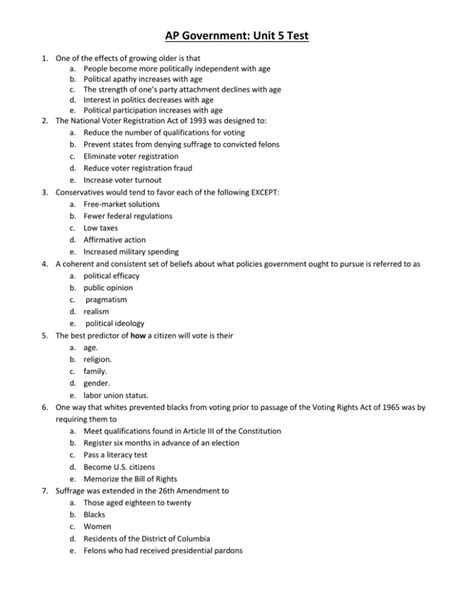Introduction
The bureaucracy is a complex and essential part of any government. It is responsible for carrying out the laws and policies of the government, and it plays a crucial role in the day-to-day functioning of the state.

Structure of the Bureaucracy
The bureaucracy is typically organized into a hierarchy, with each level reporting to the level above it. The highest level of the bureaucracy is usually the cabinet, which is composed of the heads of the various government departments. Below the cabinet are the various departments, which are responsible for specific areas of policy, such as education, health, and defense. Within each department are a number of bureaus, which are responsible for specific tasks, such as managing a particular program or regulating a particular industry.
Functions of the Bureaucracy
The bureaucracy performs a wide range of functions, including:
* Implementing laws and policies: The bureaucracy is responsible for carrying out the laws and policies of the government. This includes everything from collecting taxes to enforcing environmental regulations.
* Providing services to the public: The bureaucracy provides a wide range of services to the public, such as education, healthcare, and social security.
* Regulating the economy: The bureaucracy is responsible for regulating the economy, including setting interest rates and managing the money supply.
* Collecting and analyzing data: The bureaucracy collects and analyzes data on a wide range of topics, which is used to inform government policy.
Challenges Facing the Bureaucracy
The bureaucracy faces a number of challenges, including:
* Size and complexity: The bureaucracy is a large and complex organization, which can make it difficult to manage.
* Lack of accountability: The bureaucracy is often not accountable to the public, which can lead to inefficiency and corruption.
* Political interference: The bureaucracy can be subject to political interference, which can undermine its ability to function effectively.
Reforming the Bureaucracy
There are a number of ways to reform the bureaucracy, including:
* Reducing its size: The bureaucracy can be reduced in size by eliminating unnecessary agencies and programs.
* Improving accountability: The bureaucracy can be made more accountable to the public by increasing transparency and giving citizens more opportunities to participate in the decision-making process.
* Limiting political interference: The bureaucracy can be insulated from political interference by creating independent agencies and giving civil servants more protection from political pressure.
Conclusion
The bureaucracy is a complex and essential part of any government. It plays a crucial role in the day-to-day functioning of the state, but it also faces a number of challenges. By understanding the structure, functions, and challenges of the bureaucracy, we can better understand how to reform it and make it more effective.
Key Terms
- Bureaucracy: A complex organization that is responsible for carrying out the laws and policies of the government.
- Cabinet: The highest level of the bureaucracy, composed of the heads of the various government departments.
- Department: A division of the bureaucracy that is responsible for a specific area of policy.
- Bureau: A subdivision of a department that is responsible for a specific task.
- Civil servant: A government employee who is not elected.
Tables
Table 1: Functions of the Bureaucracy
| Function | Description |
|---|---|
| Implementing laws and policies | The bureaucracy is responsible for carrying out the laws and policies of the government. This includes everything from collecting taxes to enforcing environmental regulations. |
| Providing services to the public | The bureaucracy provides a wide range of services to the public, such as education, healthcare, and social security. |
| Regulating the economy | The bureaucracy is responsible for regulating the economy, including setting interest rates and managing the money supply. |
| Collecting and analyzing data | The bureaucracy collects and analyzes data on a wide range of topics, which is used to inform government policy. |
Table 2: Challenges Facing the Bureaucracy
| Challenge | Description |
|---|---|
| Size and complexity | The bureaucracy is a large and complex organization, which can make it difficult to manage. |
| Lack of accountability | The bureaucracy is often not accountable to the public, which can lead to inefficiency and corruption. |
| Political interference | The bureaucracy can be subject to political interference, which can undermine its ability to function effectively. |
Table 3: Ways to Reform the Bureaucracy
| Reform | Description |
|---|---|
| Reducing its size | The bureaucracy can be reduced in size by eliminating unnecessary agencies and programs. |
| Improving accountability | The bureaucracy can be made more accountable to the public by increasing transparency and giving citizens more opportunities to participate in the decision-making process. |
| Limiting political interference | The bureaucracy can be insulated from political interference by creating independent agencies and giving civil servants more protection from political pressure. |
Questions for Discussion
- What are the main functions of the bureaucracy?
- What are the challenges facing the bureaucracy?
- How can the bureaucracy be reformed?
- What is the role of civil servants in the bureaucracy?
- How does the bureaucracy interact with the other branches of government?
